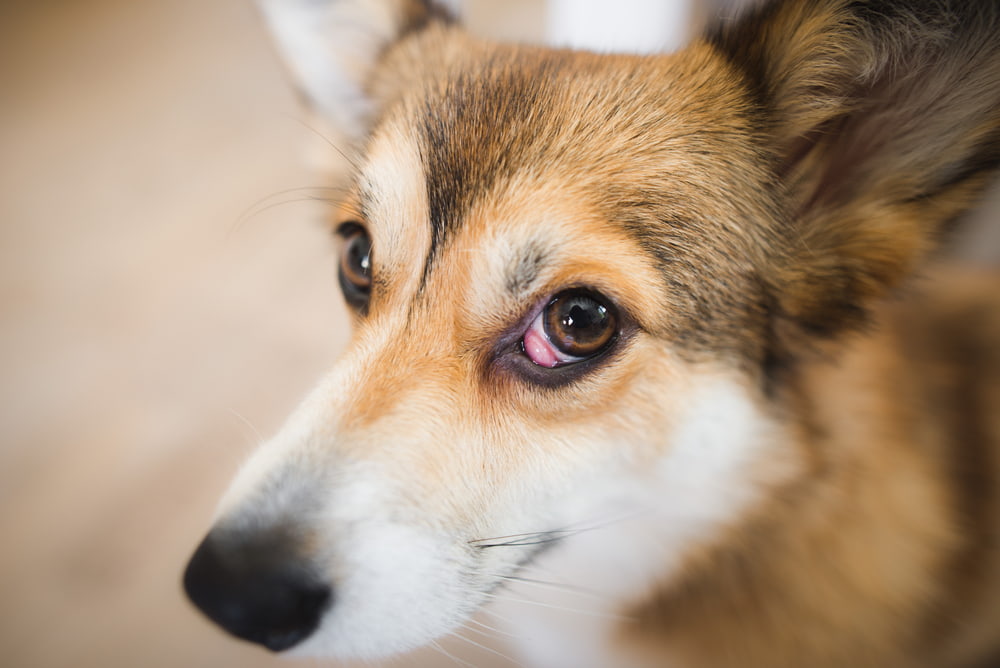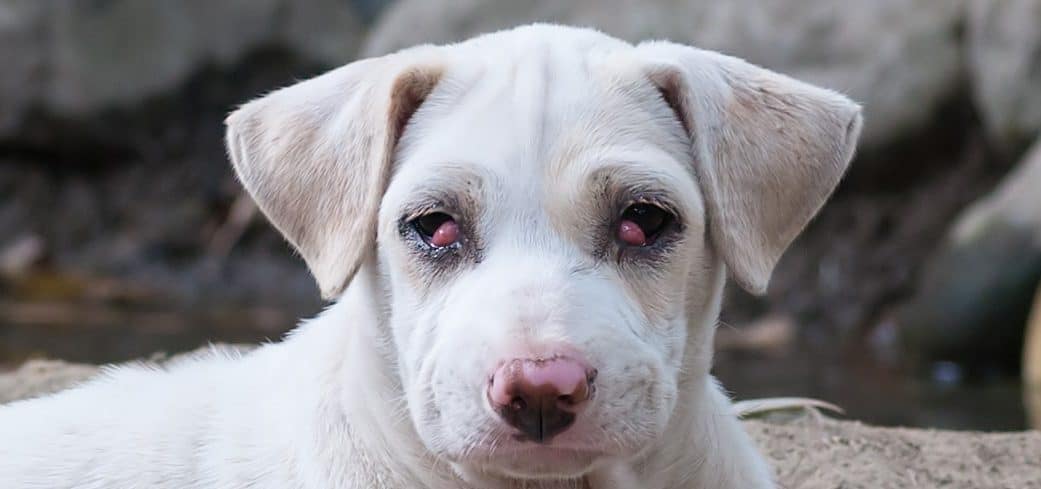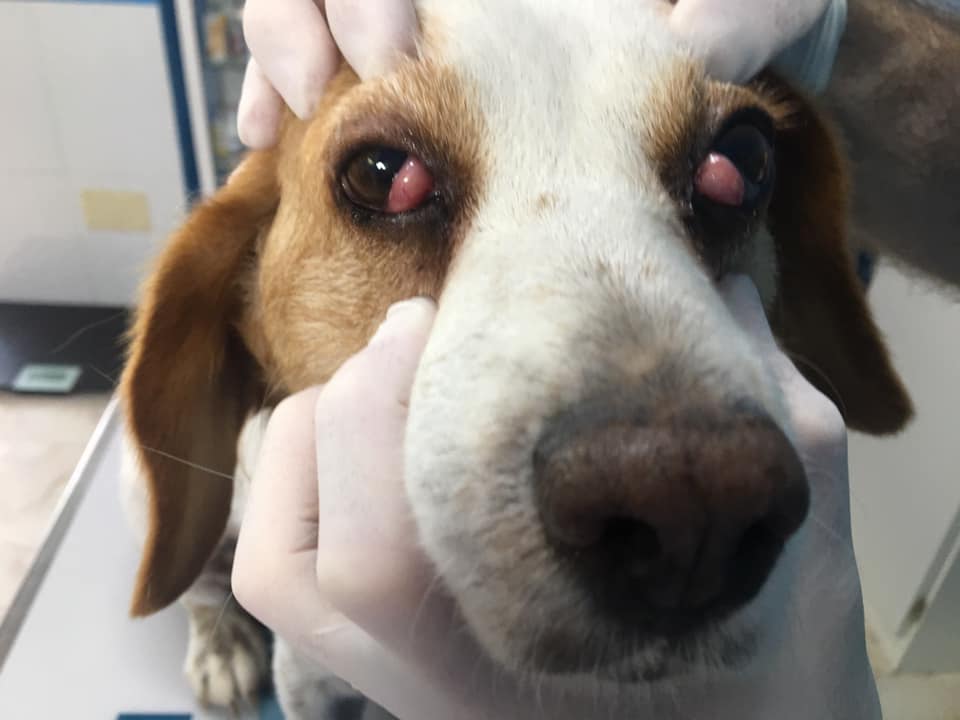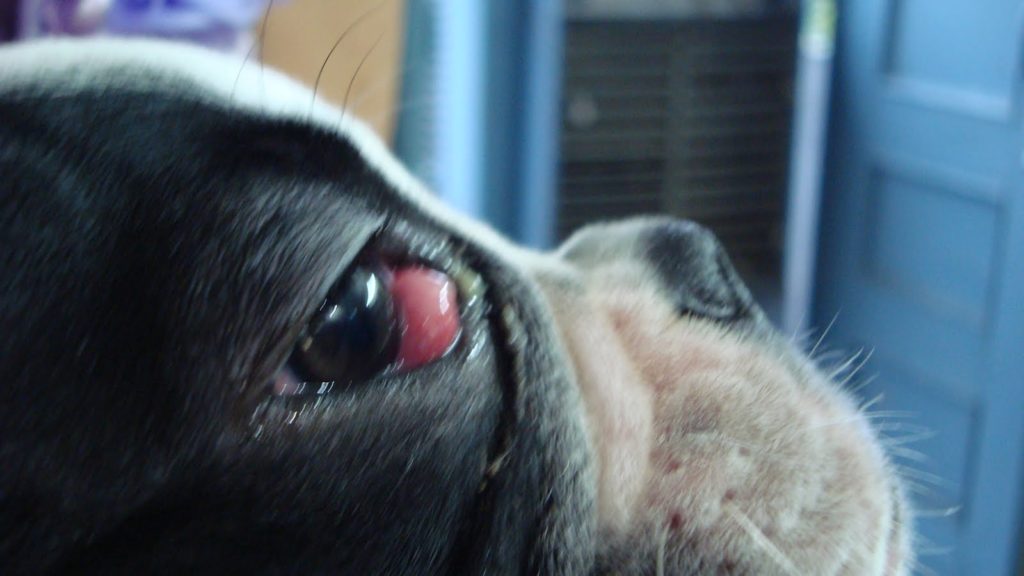If your dog has a red bump in the corner of one or both eyes, it could be due to cherry eye; Cherry Eye in Dogs. This condition is more common in younger dogs less than two years and usually affects just one or both eyes.
Many animals, including dogs, have third eyelids. These are also known as nictitating membranes, and they provide protection to the eye in addition to assisting with moisture on the surface of the eye. Dogs can get cherry eye if their tear gland is displaced or protrudes out of place. It is important to note that the third eyelid of dogs has a slightly different function to that of humans.

Cherry eye occurs when a dog’s third eyelid protrudes from its normal position. This gland, which is located in the third eyelid and cannot normally be seen, becomes inflamed and pops out of its normal position. Besides providing extra protection for your dog’s eye, this gland is also responsible for secreting tears. In fact, this tear gland is behind the production of almost half of the tear in dog, so cherry eye can cause your dog to have excess tearing or dry eyes.
In dogs, cherry eye is a condition in which the tear gland protrudes from its normal position. This may be painless and non-harmful to your dog, but can also cause irritation and dry eye. The condition develops when the ligament that holds the tear gland in place breaks or stretches.
Cherry eye is a common problem in dog breeds with shorter faces and smaller eyes. The list of breeds prone to cherry eye includes Pugs, Bulldogs, Boxers, Rottweilers and many others.
Signs of Cherry Eye in Dogs
Symptoms of cherry eye result in a cherry eye appearance, which look like a pink blob in the corner of your dog’s eye near their nose. Your dog’s eyes may become dry and irritated, and red and inflamed as a result. Their eyes may also have excess discharge leaking from them. The cherry eye condition is not painful for your dog. However, the bulging mass can get in the way of other structures in your dog’s eyes. This can lead to discomfort and vision problems.

If a cherry eye is large enough, it may also make it difficult for the dog to completely close its eyes. This can also be a contributing factor for dry eye if the eye is kept partially open at all times.
Causes of Cherry in Dog
The tear gland of dogs is usually held in place by a ligament that attaches it to the eye socket. However, in some breeds such as Boxers and Bulldogs, this attachment is weaker than normal, which may cause the tear gland to pop out of position. When the gland is abnormal, it becomes irritated and struggles to produce tears normally. This may also contribute to irritation of the eye.
Diagnosing Dog with Cherry eye
Dogs with this condition, which is also called prolapsed of the third eyelid, will have a visible bulge on their eye. The veterinarian will do a physical examination and might perform diagnostic tests to check for dry eye such as Schirmer’s test that measure tear production.

Treatment of Cherry eye
This condition is usually treated with surgery. After the prolapsed gland is returned to its proper position, it is stitched in place so that it can’t slip out again. If the tear gland has been out of place for a long time or if it has stopped functioning, or if the surgical procedure described above has been tried before and failed, the gland may need to be removed.
If your dog’s tear gland is removed or surgical treatment is not an option, they will need to use eye drops the rest of their life.

